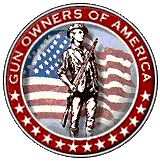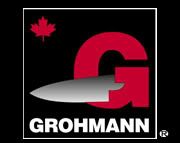 |
| 14 shots at 25-yards, 100 gr. Federal load |
When I first shot it I had nothing but Federal factory 85 gr. bulleted ammunition and was later able to get some of the 100 gr. bulleted ammunition. Both bullets are flat-nose soft-points (jacketed) and look the same while in the case but the 85 gr is obviously a bit shorter. Some cases seemed to be a bit fat near the case head and didn't chamber easily but now I am convinced that one must precisely locate the cylinder to avoid the rim rubbing on the side of the loading cut in the recoil shield. That is not too great a difficulty to prevent me from liking the gun, but...
I noticed with both loads that it seemed there would be 6 or 7 different groups on the target. I am not an "expert" shot but I can usually kill squirrels with pistols at up to 25-yards despite the inevitable vision changes that come with old age and I have to ask, how can I get 6-7 different groups if I can't shoot the gun well enough to get the one group one would expect? I thought perhaps that the chambers differed significantly from one another.
You can see those differences in a couple of ways aside from the 6-7 different groups. One way is in the burn marks on the front of the cylinder. Because of the size of the cylinder and the quantity of gas produced by the cartridge one has distinctive burn marks on the side of the cylinder by each chamber where some gas is directed down the side of the cylinder by the top strap. This is likely where the "spitting" is mostly originating. I don't know if this is avoidable or not but in any case the patterns of these burn marks are different for each chamber and the larger marks come from those chambers with the apparently largest throats.
Yes, those throat dimensions differ for each chamber. I don't have a set of plug gauges, the ideal way to check this out, but I do have a variety of bullets intended for this cartridge and/or its .32 caliber brethren (.32 S&W, .32 S&W Long, .32 HR, and .32-20). I tried the "drop test" in that I took each of those bullets, measured them with my dial calipers (after ensuring they were properly calibrated) and found that there were 2 chambers whose throats were considerably tighter than the other 7. These 2 chambers also had the smallest burn marks on the side of the cylinder. Both the Speer and Hornady 100 gr. bullets marked .312" and measuring .3115-.3112" dropped all the way through every throat but for those two chambers. I was a bit surprised that cast bullets of the same dimensions did not and don't know why this is so but suspect the lube gripped the throats just enough to prevent their passing. The barrel throat does not permit these same bullets to get so far as to pass the ogive.
That's not the only problem with this gun though. Sometimes, especially immediately after shooting, the action will not cycle. My impression is that something has been knocked out of kilter inside. My first thought was that fired primers were dragging on the recoil shield or that the case head itself had hung up on one of the slight hole edges in the recoil shield. However, I was able to duplicate this "freezing" or "locking up" of the action with an empty chamber even without the cylinder installed.
So, what to do? Well, the gun was bought new, has not been altered, has never had other than factory ammo fired in it and it isn't good enough so it is going back to Ruger. It won't be fired again until it comes back from them.






















No comments:
Post a Comment